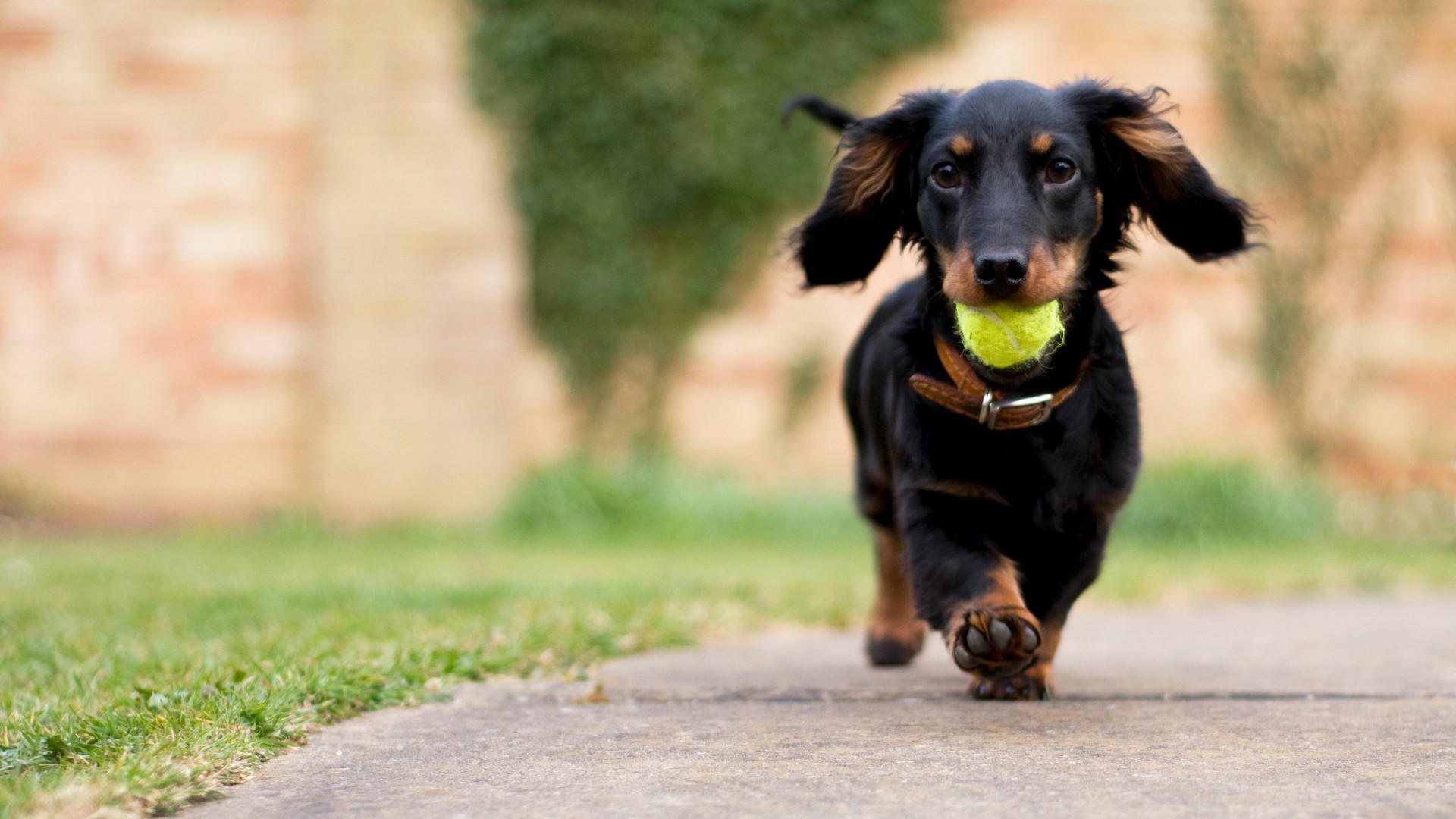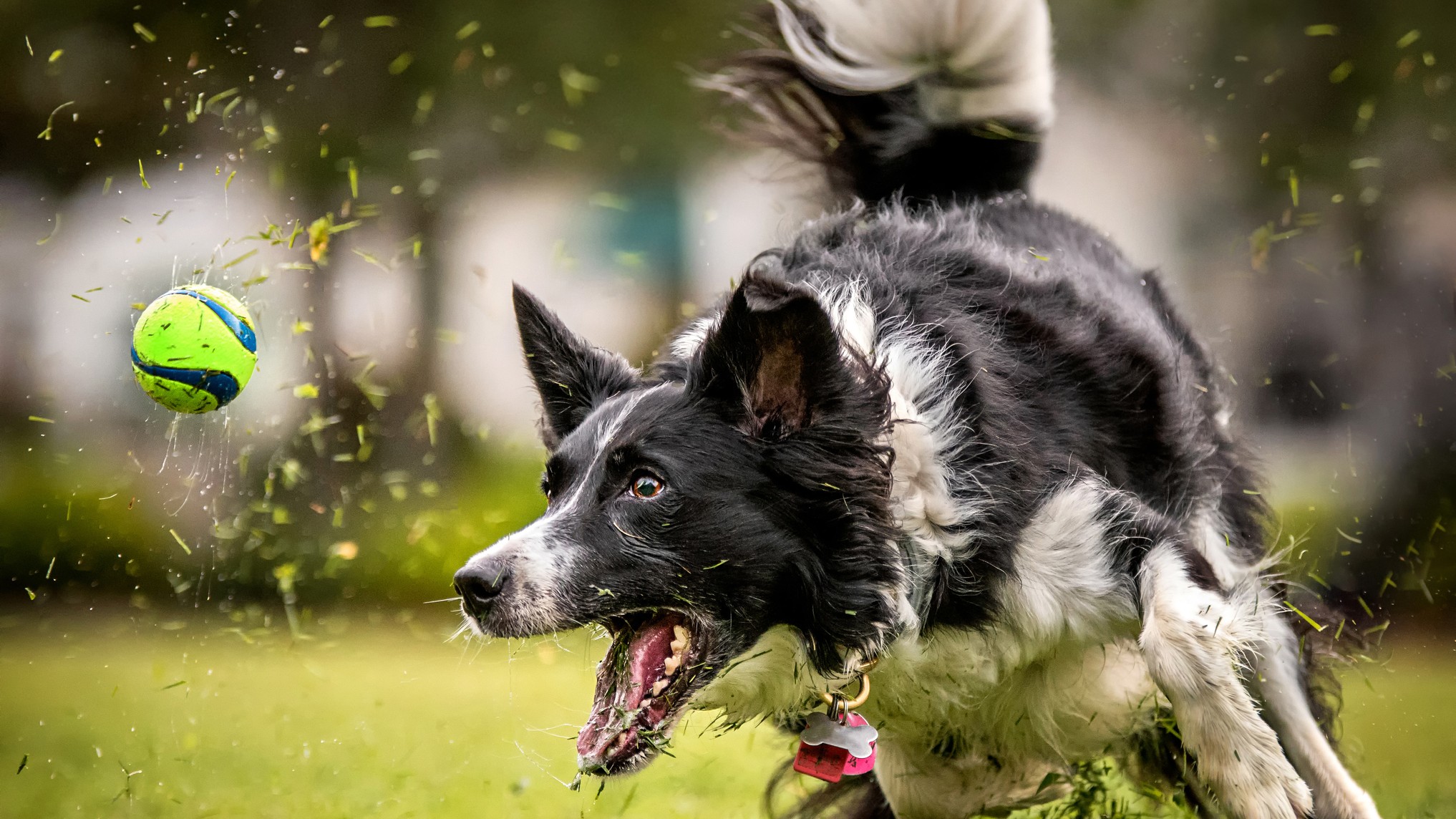What is dog enrichment? 5 things every dog owner should know
Dog enrichment could be the key to a happy dog – let’s look at what you need to know

Right now, dog enrichment is a pretty hot topic amongst vets and behaviorists. Why? Well, providing enrichment for your canine friend may be one of the best things you can do to improve their quality of life. Dog enrichment is thought to improve mental health – and that means improving behavior too!
If you thought enriching a dog's life simply meant providing the best dog toys for your pooch, there's so much more to this trend than meets the eye. From creating your own DIY dog toys to games for dogs, here's how you can get creative and give your canine companion their best life.
What is dog enrichment?
‘Enrichment’ is the term given to improving an animal’s quality of life by making the environment more complex and dynamic, and providing mental and physical stimulation. Often, enrichment mimics an animal’s natural ‘wild’ existence, including hunting for food, stimulating the senses, and providing variety. Enrichment allows an animal the most often forgotten of the ‘five freedoms’ – the freedom to express natural behaviour.
It’s easiest to think about enrichment when you think about a chimpanzee in a zoo. A bare, circular cage with a dirt floor isn’t sufficiently natural and doesn’t stimulate the animal, making them prone to boredom, frustration, and repetitive behaviours. Add some plants, a climbing frame, a termite mound (regularly replenished with fresh termites, of course), some hidden fruits, and a few other chimpanzees, and you are bound to end up with a happier, more relaxed animal.
For dogs, who are domesticated, it can be a bit harder to determine what sort of enrichment you should be providing. So, let’s take a look at the five things you should know about canine enrichment.
1. Food puzzles are a great start
In the wild, a wolf would spend a large portion of his day hunting, killing, eating, burying, and guarding his food. Dogs have changed a lot since their wolf days, but if their food is given to them in a bowl, it takes just minutes to eat – and then what do they do with the rest of their day?
Using puzzle feeders, treat balls, and similar food games means that dogs can use their incredible brains to forage out their food. Stuffed toys and lick mats enable dogs to spend ages getting the last morsel from their food – just like a wolf with a bone. In other words, filling your dog’s day with the task of getting to his food is one of the most natural enrichments you can give him.
Get the best advice, tips and top tech for your beloved Pets
2. Let your dog stop to sniff
Your dog’s nose is probably their most important sense, and one of their main ways of communicating with other dogs and getting information about the world. It’s the dog version of ‘reading the newspapers’, (or these days, scrolling through Facebook!). But when we march off on our dog walk with our step tracker monitoring our heart rate and our busy lives, their enjoyment is probably one of the last things we’re thinking about.
Whilst cardio is good for both of you, taking time to stop and smell the roses (or another dog’s pee, in this instance) is also important for mental health. Since sniffing is a key part of your dog’s environmental and behavioural enrichment, consider taking the time to go on a ‘sniffari’ – when you move at his pace, letting him sniff what he wants to. If you have an elderly dog, or one recovering from injury, a sniffari can be a great way to keep him mentally stimulated without overdoing it on the exercise.
3. Alternate toys to create novelty
Why is it that other kids’ toys are far more interesting than any they have at home? Well, the same is true of dogs! Unless it becomes a firm favourite, what becomes familiar becomes boring. Try to have a variety of toys, and switch them out to create novelty. Instead of having them always available for your dog, hide some away so that they become ‘new’ again over time.
When it comes to dog enrichment, you can also vary how you give your dog their toys. They could get them in return for a trick, or you could roll them up in a towel and help your dog ‘find’ them. Or, make a game of putting a new one out each night for your dog to ‘find’ in the morning to keep their environment stimulating.
If you're feeling creative, you can even create a few DIY enrichment toys, such as a snuffle mat that encourages your dog to sniff and search out the treats hidden inside.

4. Games count as dog enrichment
Unlike most wild animals, who should have as little contact with humans as possible, playing with your dog is an essential part of dog enrichment. Socializing with humans is important to dogs, and one of the best ways that dogs socialise is through play. Try to introduce new games to keep things mentally stimulating for your dog. Hide and Seek is fun, or ‘Find the Treat’ is a great way to let them use their nose to find a food reward. If ‘Tug of War’ is too tame, consider signing up for Agility, Nosework, or ‘Barkour’ lessons to keep the dog enrichment fresh and exciting!
5. Enrichment should be tailored to your dog
When thinking about dog enrichment, you should take into account your pooch’s age, interests, and physical abilities. If you have an elderly dog, some games might not be appropriate. If you have a young puppy, certain toys might cause frustration or be used to relieve teething pain even if that’s not what they’re designed for. Dogs that are injured, ill, or recovering from surgery may benefit more from a calm sniffari than a mad game of hide and seek.
Similarly, think about your dog’s interests. If your dog is descended from a herding breed, like a collie or sheepdog, they are likely to be highly intelligent and need more puzzle-based stimulation. A terrier, on the other hand, might prefer game-based stimulation, or even a sandpit to dig in. It’s all about knowing your dog and what they’ll find interesting – as well as trying a few new things to keep it varied!
Conclusion
Dog enrichment is about anything you can do to improve your dog’s environment and stimulate their brains. The simplest changes are to how you feed your dog, but there are a huge number of things you can do to add enrichment to your dog’s life – and, since variety is the spice of life, why not try them all?
After graduating as a vet from the University of Nottingham in 2016, Dr. Joanna Woodnutt went on to practice companion animal medicine in the Midlands. She quickly developed a love of consulting and helping clients with medical problems such as dermatology, behavior and nutrition - anything that involved helping clients understand their pets better.
Jo started writing about pet health in 2017, realizing that it meant she could help even more pet parents. Since then, she has written for countless online and print publications and is a regular contributor for Edition Dog Magazine. Jo is the director of The Veterinary Content Company, which she founded in 2020. She is also the founder of Petlearnia, a platform that provides pet e-learning courses for pet parents.
Jo now lives in the Channel Islands with her husband Ian and terrier Pixie.

